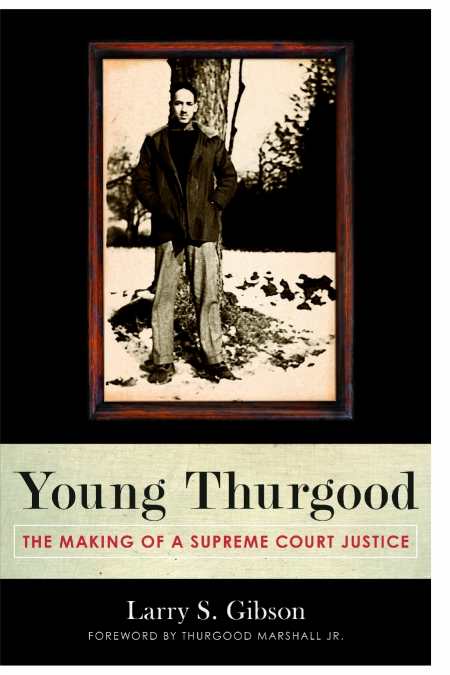Young Thurgood
The Making of a Supreme Court Justice
Thurgood Marshall is well-known for his successful work as an NAACP (National Association for the Advancement of Colored People) lawyer who won landmark court rulings such as the often celebrated, Brown vs. Board of Education of Topeka, Kansas, in 1954. Since his appointment in 1967 as the first African-American to serve on the US Supreme Court, Marshall has been applauded, revered, and commemorated for his accomplishments. Yet, few know the story of Marshall’s formative years as it is presented in Young Thurgood by University of Maryland law professor, Larry S. Gibson.
Born into a nurturing, entrepreneurial family in Baltimore, Maryland, on July 2, 1908, Marshall knew he wanted to become a lawyer by the time he reached high school. Both Marshall’s maternal and paternal grandparents owned grocery stores in Baltimore, and he enjoyed the support and encouragement of a number of extended family members who lived with and near him. Trained to debate by his father around the dinner table, Marshall developed a considerable command of language and research skills that were further refined in college and law school. Marshall’s son, Thurgood Marshall, Jr., writes in the foreword, “This book brings to life the array of relatives and friends that surrounded my father as he grew up and demonstrates how an early focus on academics and debate honed skills and interests for a lifetime.”
Using interviews, documents, and personal papers rarely shared, Gibson shows that Marshall was a sharp, ambitious youth who followed his older brother, Aubrey, an aspiring doctor, to Lincoln University even as his parents, a teacher and a waiter, were struggling to pay tuition. Later, at Howard University, Marshall was taught and mentored by some of the best attorneys of the time.
Once the author introduces Marshall’s early criminal cases, the focus on his personal life decreases. Gibson provides historical context that situates Marshall among the black attorneys in Maryland who practiced long before he graduated first in his class and was admitted to the Maryland Bar in 1933. Well-researched, the book corrects some misinformation about Marshall. For example, he did not apply to attend the University of Maryland as a number of biographies suggest.
Gibson describes a quick-witted, charismatic, and wily Marshall, who often put those listening to him at ease when he spoke about matters related to race and injustice. Readers of American history will enjoy this entertaining, accessible, though carelessly edited, look at the early career of a noteworthy attorney dedicated to social justice and the common good.
Reviewed by
Kaavonia Hinton
Disclosure: This article is not an endorsement, but a review. The publisher of this book provided free copies of the book to have their book reviewed by a professional reviewer. No fee was paid by the publisher for this review. Foreword Reviews only recommends books that we love. Foreword Magazine, Inc. is disclosing this in accordance with the Federal Trade Commission’s 16 CFR, Part 255.

